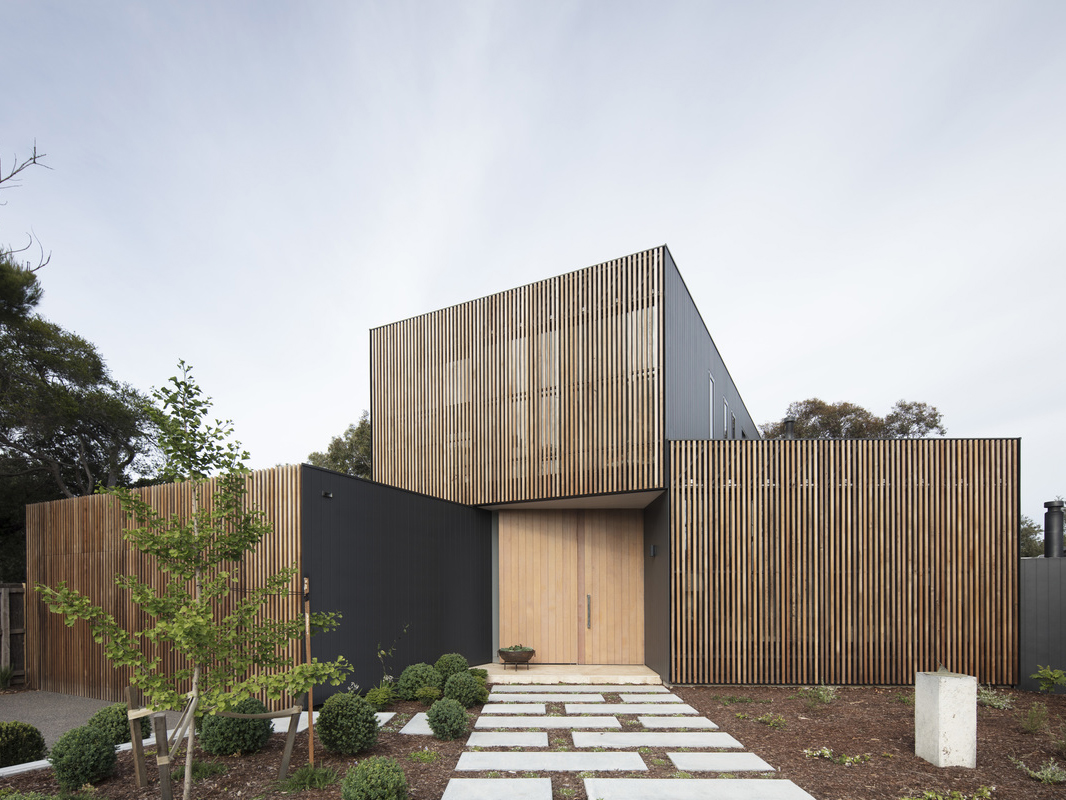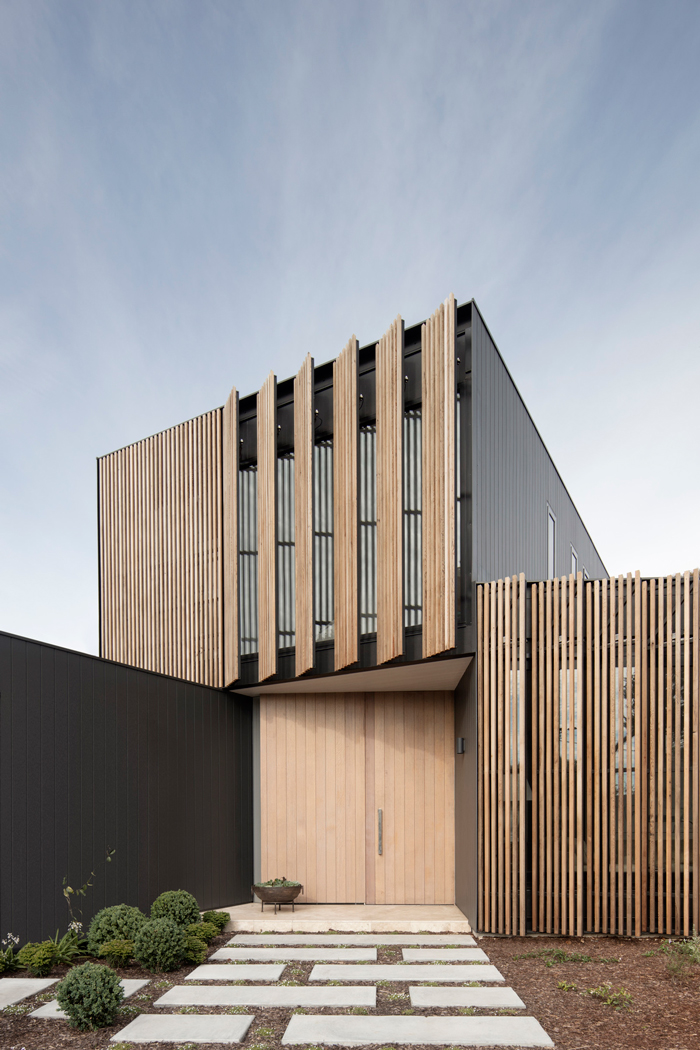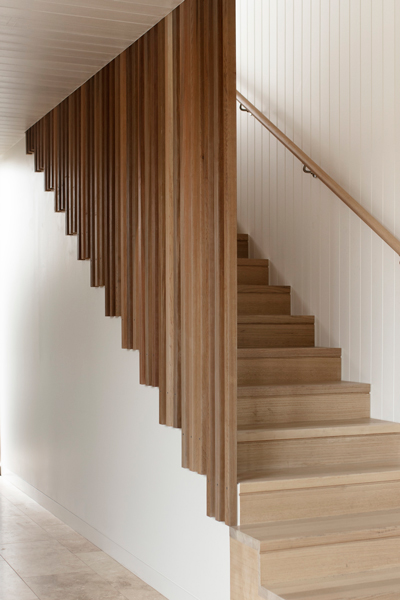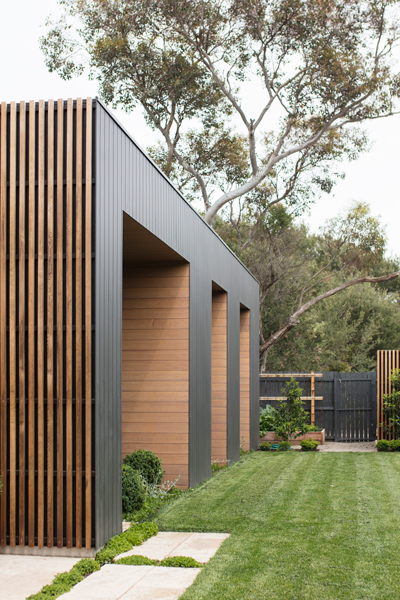
Seachange House is a low-maintenance beach house designed to achieve value for money while employing a range of ESD principles.
Context and brief
The clients were a couple looking to make a sea change after selling their farm in Western Victoria. Having spent many summers in Barwon Heads, they were seeking a house in the area which could reference their rural lifestyle while still blending with its coastal surrounds, as well as support them in the later stages of their lives.
The site is located on a street with an eclectic mixture of post-war beach houses and modern contemporary architecture. Therefore, the brief for this build was a modern, low-maintenance house with panoramic views that reimagined the vernacular of a modern-day beach house.
Design

The layout of the home was informed by the clients’ desire for panoramic outdoor views.
On the ground floor, the home is divided into public and private spaces, with a concealed door dividing the living, dining and kitchen spaces from the master bedroom suite, study and laundry.
There is a large outdoor living space to the north of the plan, as well as a courtyard garden to the south of the master bedroom suite, accessible from the kitchen.
Habitable spaces have been clustered on a single level, providing easy circulation should the clients have limited mobility in the later stages of their lives.

A small upper level was designed almost as a separate dwelling. This space is to be used by the clients’ children and grandchildren when they come to visit, and contains two bedrooms, a bathroom and a small private living space with expansive views of the Barwon River.
According to the architects, the house explores the relationship between public and private space. For example, the ground floor living space and upper level windows are articulated with mechanically operable screens. These screens are simultaneously able to expose views to the Barwon River, control ventilation and solar access, and ensure privacy from the street.
Sustainability features

- Recesses in the ground floor facade provide ground floor living, dining and bedroom spaces with protection from the summer sun, while allowing the winter sun to passively heat the spaces.
- A north-facing courtyard is formed between the two living areas. Enclosed on three sides, it is sheltered from the cold southern winds, while the overhanging floor plate provides protection from sun to the dining space through the summer periods.
- The travertine tiles on slab act as a thermal mass to absorb and store heat.
- Cross flow ventilation occurs between the northern-southern courtyards, passively cooling the living, dining and kitchen spaces.
- Stormwater is collected in a 20,000L tank and reused for garden irrigation and toilet flushing, and photovoltaic solar panels and a solar hot water system are located on the roof.

